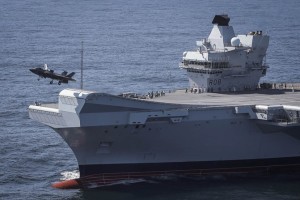
The U.S. and U.K. defense chiefs signed a joint declaration agreement allowing U.S. Navy and Marine Corps personnel to deploy in a joint UK-U.S. combined carrier strike group led by the new HMS Queen Elizabeth aircraft carrier. The British carrier is set for its first deployment this spring and the new joint declaration will allow the inclusion of a detachment of Marine Lockheed Martin [LMT] F-35B aircraft and the Navy’s USS The Sullivans (DDG-68) in the carrier strike group, the…

 By
By 











